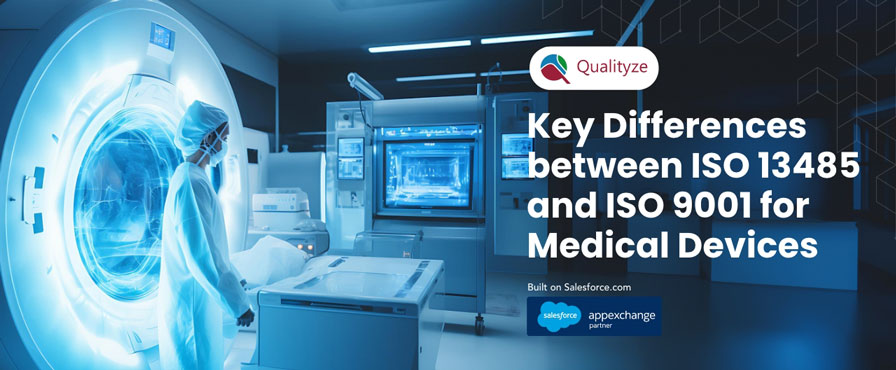Calculate your potential savings with our ROI Calculator
ROI CalculatorCalculate your potential savings with our ROI Calculator
ROI Calculator
Different industries use different quality management standards to cater to their unique requirements. Even within the industry, different ISO standards are used for varied purposes. For example, ISO 13485 is a global set of standard quality management systems for a company involved in the design, production, installation, servicing, and manufacturing of medical devices, while ISO 9001 helps organizations of different sizes and sectors to scale their performance, demonstrate their dedication to quality, and meet customer expectations.
Quality is indispensable in dynamic industries such as pharmaceuticals. Quality management software ensures adherence to modern quality principles and safety. ISO, an abbreviation for International Organization for Standardization, plays a pivotal role in guaranteeing safety and quality in the medical industry. It will be easier to conform to high-quality benchmarks in the medical sector with ISO standards.
ISO standards enforce a universally accepted set of standards at every step of quality management. It ensures that the medical industry and healthcare providers offer consistency and excellence in their services. Deviation from set ISO standards can adversely impact, causing even deaths.
Adherence to ISO standards instills confidence in patients and other stakeholders, ensuring transparency in the industry. Additionally, in a world characterized by rapid medical advancements, ISO regularly updates its standards to reflect the changes and provide best practices. Updating ISO standards cultivates a culture of continuous improvement and innovation, guaranteeing safety to all.
ISO standards cover different areas in the medical industry. Adherence to ISO standards enables management of equipment, manufacturing processes, information, etc.
ISO 13485 and ISO 9001 are used in the medical device industry, and both are responsible for maintaining the highest standards of quality in the industry. There are some key differences between the two, and it is crucial to understand the differences for a holistic understanding of their functions and importance in the medical device industry.
Qualityze’s Risk Management software analyses risks and offers robust risk mitigation solutions. Using Qualityze’s Risk Management software, you can build risk management into your medical device manufacturing process, complying with regulatory requirements.
Document management is a dynamic process and demands constant attention and resource commitment. Qualityze’s Document Management software takes care of specific documentation requirements in the design and development of medical devices, enabling your organization to meet the standards of ISO 13485.
Qualityze’s Document Management and electronic Batch Records modernize your records, enabling you to trace the origin of every unit of product to its primary source.
Qualityze’s Complaints Management software is a cost-effective and efficient way to optimize customer satisfaction. Using the Complaints Management software of Qualityze, you can monitor and measure customer satisfaction rates and make changes accordingly for better results.
Related Article : Revealed: Benefits of IATF 16949 Compliant QMS Software
Both ISO 9001 and ISO 13485 are concerned with quality management in the medical device industry. There are some similarities between the abovementioned ISO standards, but understanding their key differences is crucial to modernizing your medical device manufacturing processes. ISO 9001 is a generic quality management standard that applies to different businesses across industries. ISO 13485 is a comprehensive quality management standard for medical device manufacturing.
Qualityze’s suite of EQMS organizes your medical device manufacturing process, empowering you to meet standards set by ISO 13485 without exception and deviation.